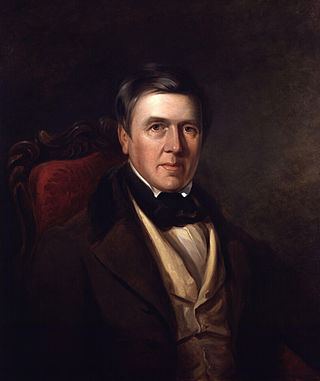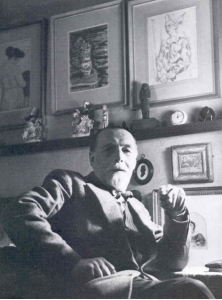
David Cox was an English landscape painter, one of the most important members of the Birmingham School of landscape artists and an early precursor of Impressionism.

Paul Nash was a British surrealist painter and war artist, as well as a photographer, writer and designer of applied art. Nash was among the most important landscape artists of the first half of the twentieth century. He played a key role in the development of Modernism in English art.

Eric William Ravilious was a British painter, designer, book illustrator and wood-engraver. He grew up in Sussex, and is particularly known for his watercolours of the South Downs, Castle Hedingham and other English landscapes, which examine English landscape and vernacular art with an off-kilter, modernist sensibility and clarity. He served as a war artist, and was the first British war artist to die on active service in World War II when the aircraft he was in was lost off Iceland.

David William Gentleman is an English artist. He studied art and painting at the Royal College of Art under Edward Bawden and John Nash. He has worked in watercolour, lithography and wood engraving, at scales ranging from platform-length murals for Charing Cross Underground Station in London to postage stamps and logos.

Sir George Clausen was a British artist working in oil and watercolour, etching, mezzotint, drypoint and occasionally lithographs. He was knighted in 1927.

Philip Wilson Steer was a British painter of landscapes, seascapes plus portraits and figure studies. He was also an influential art teacher. His sea and landscape paintings made him a leading figure in the Impressionist movement in Britain but in time he turned to a more traditional English style, clearly influenced by both John Constable and J. M. W. Turner, and spent more time painting in the countryside rather than on the coast. As a painting tutor at the Slade School of Art for many years he influenced generations of young artists.

Norman Wilkinson was a British artist who usually worked in oils, watercolours and drypoint. He was primarily a marine painter, but also an illustrator, poster artist, and wartime camoufleur. Wilkinson invented dazzle painting to protect merchant shipping during the First World War.
Roland Vivian Pitchforth RA ARWS was an English painter, teacher and an official British war artist during the Second World War. He excelled at watercolours and in later years concentrated on landscapes, seascapes and paintings of atmospheric effects.
James Bateman was an English painter and engraver specialising in agricultural topics, rural subjects and pastoral landscapes.
Rupert Norman Shephard was an English painter, illustrator and art teacher.
Walter John Bayes was an English painter and illustrator who was a founder member of both the Camden Town Group and the London Group and also a renowned art teacher and critic.

Archibald Standish Hartrick was a Scottish painter known for the quality of his lithographic work. His works covered urban scenes, landscapes and figure painting and he was a founder member of the Senefelder Club.

Clifford Hall, ROI, NS, was a British painter of street scenes and bohemian life. One of his more recognizable post-war phases was that of people covered to various degrees by a towel or blanket. Some have their faces turned from the viewer or hidden.
Raymond James Coxon was a British artist. He enrolled at the Leeds School of Art, the Royal College of Art, and became a teacher in the Richmond School of Art. The creative work of his long and successful career—singly and in various art groups—included landscape and portrait painting, abstract works, creating church murals and serving as a war artist during World War II. In particular he was known for the bold style of his figure and portrait work. After World War Two his paintings became more abstract.
John Laviers Wheatley was a British painter, art teacher and museum director who also served as a war artist in both World War I and in World War II.
Phyllis Ethel Ginger was a British artist and illustrator who, although she had a long career in several different media, is now best known for the topographical watercolours she produced during the Second World War for the Recording Britain project.
Thomas James Carr was an Irish artist who was associated with the Euston Road School in the 1930s and had a long career as a painter of domestic scenes and landscapes.
Kathleen Saywell Allen (1906–1983) was a British painter, muralist, designer and art teacher. Allen is known for her urban landscapes and, in particular, scenes depicting post-war rebuilding in London.
Mabel Dawson was a Scottish artist who painted a wide variety of subjects, including animals and birds, in both watercolour and tempera.
Elsie Gledstanes (1891–1982) was a British artist notable as a painter of portraits, figure groups and landscapes.









